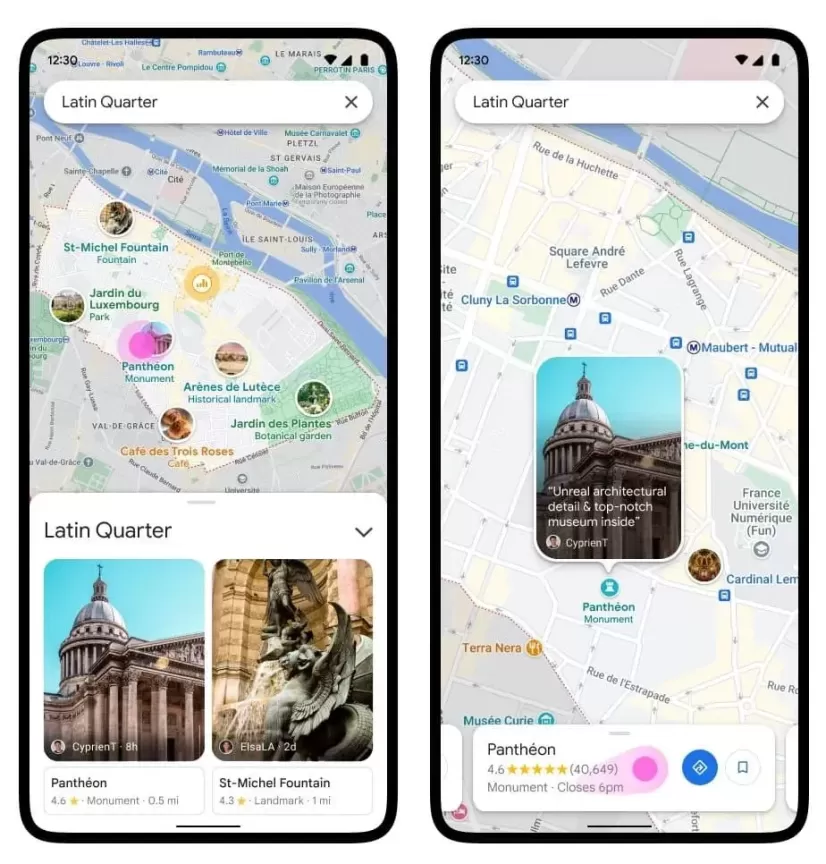What impact is TikTok having on search? As an example of its growing influence, Google estimates as many as 40% of young people, when looking for a place to eat lunch, would go to TikTok rather than Google Maps or Search. Considering the app was released in 2016 and didn't become popular in the U.S. until 2018, that's a really big number.
TikTok is a powerful platform for generating transactional behavior, which may be surprising because most content seems like funny, relaxing videos that are organic and unscripted. One reason for its success is that it's easy for influencers to monetize their content, which is why there are so many of them on the app. TikTok has even paid influencers to create content.
TikTok is especially good for driving brand awareness. They reached the billion user mark a lot faster than other social content platforms, taking only 4.9 years compared to Facebook’s 8.7 years to reach that milestone. TikTok also has a good grasp of what Gen Z and Millennials are looking for search wise, with a top-notch algorithm.
What types of content perform well on TikTok?
One example of a success story for companies on TikTok is Duolingo, who seemingly became an overnight success by focusing on creating funny content. The social media manager for the brand notes that she focuses on matching trends to ideas they develop for promoting their products, so they can go live sooner rather than later.

This type of branded company content was not the norm just a few years ago. But Tik Tok opens that door for brands to be unhinged and creative, and the younger generations like it and it works. Over 60% of TikTok users are Generation Z, or people born after 1996. According to Forbes Technology Council, there are three main reasons for this:
A defining characteristic of Gen Z is an expression of individual truth. They value individual identities, reject stereotypes, and they're more open to changes and are willing to connect with people of different groups. So it's not shocking that Gen Z fuels the growth of personalized products and personal brands. Since TikTok provides that for them with a personalized algorithm, it fits what they're looking for.
Gen Z prefers video content. In contrast to other social media platforms like Instagram and Facebook, TikTok’s dynamic video content is its primary offering, so Gen Z users tend to have significantly higher engagement on TikTok.
TikTok provides an opportunity for people to create their own well-designed content. Overall, Millennials tend to prefer consuming content, while Gen Z prefers to create it, especially when it keeps TikTok authentic and easy to enjoy. Connor Blakely from Digiday speaks to this point: “Generation Z understands that social media is like a highlight reel, and we choose to show what we feel best about. It's less about insecurity and more about being a self-confidence booster.”
TikTok and SEO
SEO on TikTok is the practice of optimizing videos to rank higher in search. There are some differences when comparing traditional and TikTok SEO. Traditional SEO focuses on text, keywords, rankings, trustworthiness, and the utility of the content (i.e., is it helpful?).
TikTok SEO, on the other hand, focuses on video and hashtags, and finds what content is good from a user engagement standpoint by considering views, comments, likes, and follows. It's also open to everyone, so anyone can go viral, and it focuses on entertainment and not necessarily fact.
There are a couple features that TikTok has recently added to continue to improve. The first was released in February of 2022, when TikTok rolled out the option to post 10-minute videos. This aimed to keep influencers on the app and did help increase interaction by other users.
This update was inspired by Vine, the once-popular video platform that helped launch the careers of many well-known stars. Twitter, Vine’s parent company, struggled with finding ways to allow creators to generate revenue since the clips were only seven seconds long with no pre- or mid-roll ads. As a result, stars weren't making money, they moved on to other platforms, and Vine ultimately shut down. TikTok was well aware of this limitation and didn’t want to repeat the error.
The second recent addition was a search bar within videos. Similar to Google search features, creators cannot control what the search bar says. But it can be influenced by the text within the video and the caption. However, we've also seen that it can be affected by the comments. So sometimes it helps the influencers and sometimes it definitely hinders them.
Free SEO Scorecard
Get professional analysts' insights into your Technical SEO, Content, Competitor Activity, UX, Web Analytic Configuration, and more. Get started with your free website SEO audit today.
Character limits have also been increased to 2,200 characters, and users can now edit their captions, as well. On the search page, TikTok also offers a “You May Like” feature, which seems redundant since the main “For You” page is technically all recommendations.
Can TikTok affect or improve Search performance on Google?
There are three reasons why we believe the answer is “yes.”
Existing products have spikes in popularity and search demand after going viral on TikTok.
A perfect example of this is the Lululemon Belt Bag. A video by an influencer went viral, and people were obsessed. The search interest increased by 1,275%, and more importantly, people bought it and posted about it. The belt bag is still trending, and Lululemon is taking full advantage of this by introducing different sizes, materials, and colors. So TikTok provides a platform where new people can be introduced to existing or established products, and they often then go to Google for more information.

New search terms from phrases and products on TikTok regularly pop up on Google.
One specific example of this trend is “cheugy.” A video published in March of 2021 got people talking about the term, including how the creator in the video used it, who else is “cheugy,” and more. The search volume for this word is now at 829,000 on Google, with peak single day traffic occurring just two months after the introduction of the TikTok video. The lag in search volume was likely due to approvals for larger brands to enter the conversation, but once companies were able to start posting about it, they did, and the search volume skyrocketed.
TikTok is an entry into the user journey for many customers who then move to Google to complete it.
TikTok is great for brand awareness and engagement, but not much after that. Users can't browse online within the app, something TikTok has been working on but not solved. Users will usually switch over to search engines for the consideration and transactional portions of the user journey, and we can see that switch over from increases in search volume, especially for product names. This is still a powerful revenue driver, as 37% of users will immediately buy a product after finding it on TikTok, with another 35% making purchases later on.
What is Google doing about TikTok?
Google’s focus appears to have shifted to creating a more visual search results page. They now include actual TikTok videos on the search page, but clicking links will take users to the TikTok URL; videos don’t play in the Search Engine results page. Google also updated the knowledge panels and other search features to focus more on images and videos, since that's what younger generations are looking for.
Google is currently working on a feature called “Exploration” that will be on the mobile app. This feature will display search results almost in the same way as social media, grouped in tiles, similar to the Instagram interface. Google officials have noted that it is intended to help people searching for inspiration rather than a fact or a specific answer. Finally, the company also released a maps update that added a feature called “Neighborhood Vibe,” which provides a quick view of what is trending within a community.

So what does your business need to do about TikTok?
The short answer is: you don't have anything to worry about (yet). Your business can use TikTok to see what people are interested in and searching for, using that knowledge to inform your digital marketing plan, without having to commit to becoming a content creator.
If you want to know more about how your company can be prepared for the future of search, start with a free assessment of your current SEO program!

